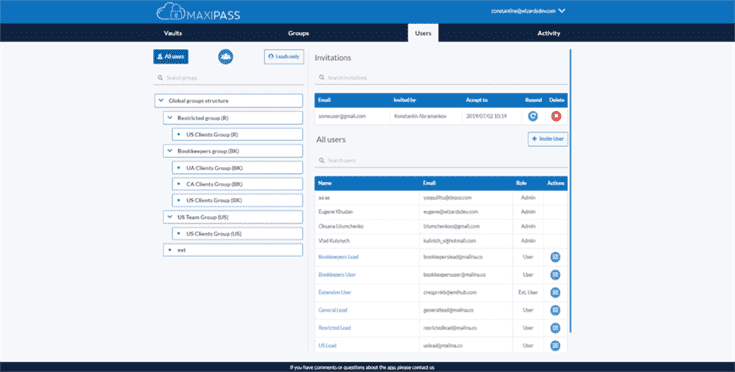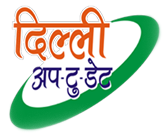FDD is domain-driven, while Scrum focuses on producing vertical slices of functionality accepted by the product owner. Regular builds ensure there is always an up-to-date system that can be demonstrated to the client and helps highlight integration errors of source code for the features early. A feature team is a small, dynamically formed team that develops a small activity. Multiple minds are always applied to each design decision, and multiple design options are evaluated before one is chosen. That involves feature prioritization to select which features are to be developed and designed in the span of a project cycle.

It is a way of dealing with, and ultimately succeeding in, an uncertain and turbulent environment. By making access to scientific knowledge simple and affordable, self-development becomes attainable for everyone, including you! Join our learning platform and boost your skills with Toolshero.
Should You Use Feature Driven Development?
In the second part of the article, we cover how the highly iterative delivery part of FDD differs from Scrum and XP-inspired approaches. In this step, all of the items necessary to support the feature design are implemented. The user interface is designed, and a feature prototype is built and tested. If the feature passes the test and is approved, the completed version can be added to the main build and made available to customers. Then assign feature sets to the programmers who are most capable and have the bandwidth to develop them within the specified timeframe.
The first stage of examination is right after design, and if there are any issues, they will be sorted out by raising defects. As the name implies, it’s a feature-focused method (as opposed to the delivery-focused method). Features are a foundational Feature Driven Development piece. FDD values documentation more than other methods , which also creates differences in meeting the roles. In Scrum, teams typically meet daily, whereas, in FDD, teams rely on documentation to communicate important information.
Easy to track progress with reduced risks
If your team tends to run behind on development timelines, FDD could get you more organized. In addition to the above disadvantages, the design of this method happens in a way that Iterations are not well defined by the process, unlike other agile methods. They are project-specific and are as per project requirements. After that, the assignment of this class to the individual developer happens. That developer will be a Class owner for that particular function. Thirdly, a rough plan is prepared based on features and roles, and responsibilities are assigned.

This allows methods to be compared, and method fragments in the method engineering process can easily be reused. Feature-driven development is built on a core set of software engineering best practices aimed at a client-valued feature perspective. The teams had to release a brand new site and code within 28 days. The site mouse breaker allows users to play any flash games. The demand was to add a feature that helps users play the games on a web page.
Plan by feature
A team using BDD should be able to provide a significant portion of “functional documentation” in the form of User Stories augmented with executable scenarios or examples. Less documentation that can lead to faster development in some cases, although risky projects may fall prey here as there may be unclarified details that other models might produce. The Agile Manifesto and the 12 Principles were written by a group of software developers to address issues that software developers faced. When you think of Agile as a mindset, that mindset can be applied to other activities. When they got together, they did some skiing and also discussed where their approaches to software development had commonalities and differences.
- Tracking usage data allows feature teams to find friction points that stop adoption and cause churn.
- Together with the corresponding class owners, the chief programmer works out detailed sequence diagrams for each feature and refines the overall model.
- This resulted in a set of five processes that covered the development of an overall model and the listing, planning, design, and building of features.
- The construction phase involves designing and building the feature driven development.
- After the design and design inspection completion, in this process, coding will be done, followed by code integration and implementation.
- Teams can collect active and passive feedback to identify the new features to develop.
While scrum and a new variation of agile are the majorly preferred techniques . FDD can be an excellent option for software development teams, interested in a focused and structured Agile methodology. That can be scaled across the product organization and will deliver precise outcomes.
How is a Feature Defined?
Like Scrum, FDD requires the customer, also known as the project business owner, to attend the initial design meeting and iteration retrospectives. In fact, the Scrum guide states that each team should not be larger than 9 people. If the software development project requires more team members, they should form separate teams led by separate Scrum masters. When most teams and organizations start doing Agile development, they focus on the practices that help with collaboration and organizing the work, which is great. Those technical practices are essential and something you shouldn’t overlook.

Works well for large projects that contain rolling updates. Although not part of the official model, this phase can not be skipped. Another key difference is the end user; in FDD, the actual user is viewed as the end user, whereas what is feature-driven development in Scrum it’s typically the Product Owner who is seen as the end user. One of the frequent complaints about agile is that there are too many meetings. Gives the team a very good understanding of the project’s scope and context.
Build by Feature
Agile framework suitable for long-term projects where it is required to remove and replace certain features in a product consistently. It is user-centric and driven towards achieving product excellence. Note that in feature driven development, features are called “stories.” Hence, prioritize the development activities that will help the teams produce the product faster. As the FDD teams are cross-functional, all aspects of development take place concurrently – the UI design, coding, and QA. In Scrum and other agile methodologies, the role of face-to-face communication is so important, that it can only be used to manage small development teams.

In addition, configuration management is about keeping a history of changes to the system in different classes, as the project progresses. The first main activity consists of developing a general model. The result of this first activity https://www.globalcloudteam.com/ is a high level object model, together with notes about the development, functions and demands. The second step is the compiling of a function list by grouping the different functions into related functionalities and fields.
What is the Feature Driven Development methodology?
As with other agile approaches, planning in FDD is not a ‘chisel in stone’ activity. Indeed, the planning team reviews and modifies the assignment of feature sets to Chief Programmers and classes to developers as often as necessary throughout the project. In addition, the planning team does not always assign owners to all the domain classes at this time and more classes inevitably emerge as the project progresses. In practice, building the features list is a formalization of the features already discussed during the development of the object model.




